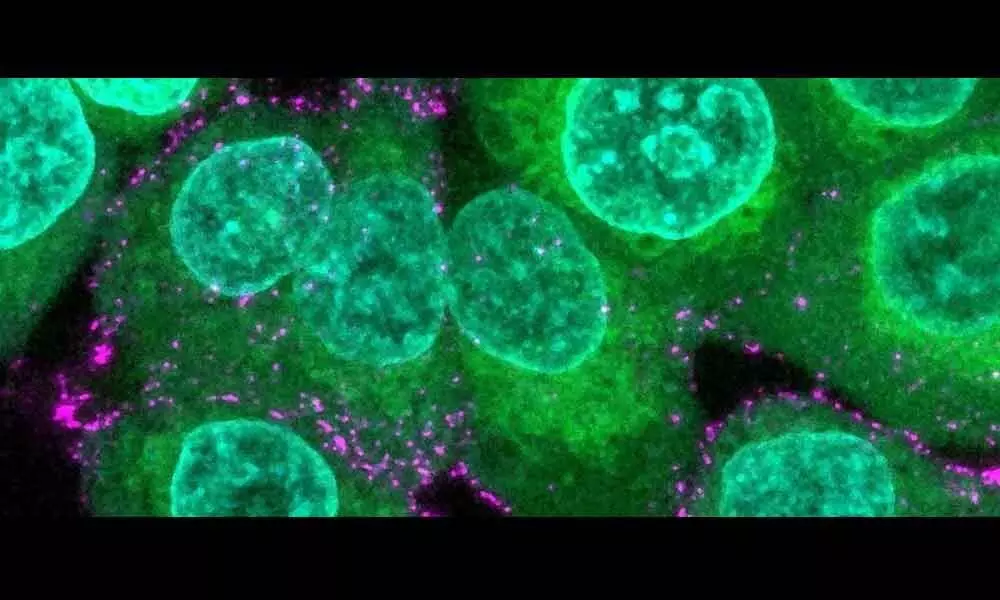Researchers Discovered The Virus's Spikes Serve As A Form Of Switch Blade

Human cells (green) with synthetic virions (magenta).
- Researchers discovered a startling way in which the virus's spikes serve as a form of switch blade, allowing it to hide from human immune system more easily.
- The eponymous corona of spikes projecting from the virus's surface was the first component the team looked at.
Researchers are circumventing the challenge by creating bare-bones versions of harmful microorganisms that teeter on the brink of being functional. Using this technology to study SARS-CoV-2, the pathogen responsible for the current coronavirus pandemic, researchers discovered a startling way in which the virus's spikes serve as a form of switch blade, allowing it to hide from human immune system more easily.
Researchers from Germany and the United Kingdom developed 'lite' versions of SARS-CoV-2 to safely study its infectious activity in the lab.
The particles, dubbed synthetic minimum virions,are made up of modules built from the ground up to provide insights into important aspects of the virus but lack the ability to work together as an infectious unit.
Biologist Oskar Staufer, formerly from the Max Planck Institute for Medical Research and currently working at the University of Oxford said that even more crucial for them as they create these synthetic virions from the ground up, is the ability to precisely determine their composition and structure.
This enables us to conduct a systematic, step-by-step investigation of various mechanisms.The eponymous corona of spikes projecting from the virus's surface was the first component the team looked at.
Since the pandemic first made headlines in early 2020, virologists have been trying to figure out whether these forecasts aid the pathogen's ability to survive and multiply.
Proteins are becoming increasingly obvious as either a help as well as a barrier to the little invader. The spikes work as a key for a sort of cellular lock known as an ACE2 receptor, deceiving tissues into allowing the virus to enter.
The proteins, on the other hand, are a clearly recognised feature for antibodies to attach onto and cause a clean-out. We even make vaccinations based on its prevalence, giving naive, uninfected immune systems a taste of its structure in order to better prepare them for an actual infection.
It appears up that the resourceful coronavirus has picked up a few tricks over the years that enable it to avoid this annoyance.
The researchers were particularly interested in how specific fatty acid-type immune components interact with the spikes to cause inflammation.
Immune molecules latched to a region of the spike that had already been identified in previous research. Given how resistant to modification this region was, it's reasonable to infer it's a vital structure for the virus's survival.
When the immunological molecule caught in, the spike undergone a structural shift, effectively folding itself away, according to the researchers. This makes breaking into any surrounding cells much more difficult. However, the virus has a tougher time attracting antibodies in this shape.
Next Story




















